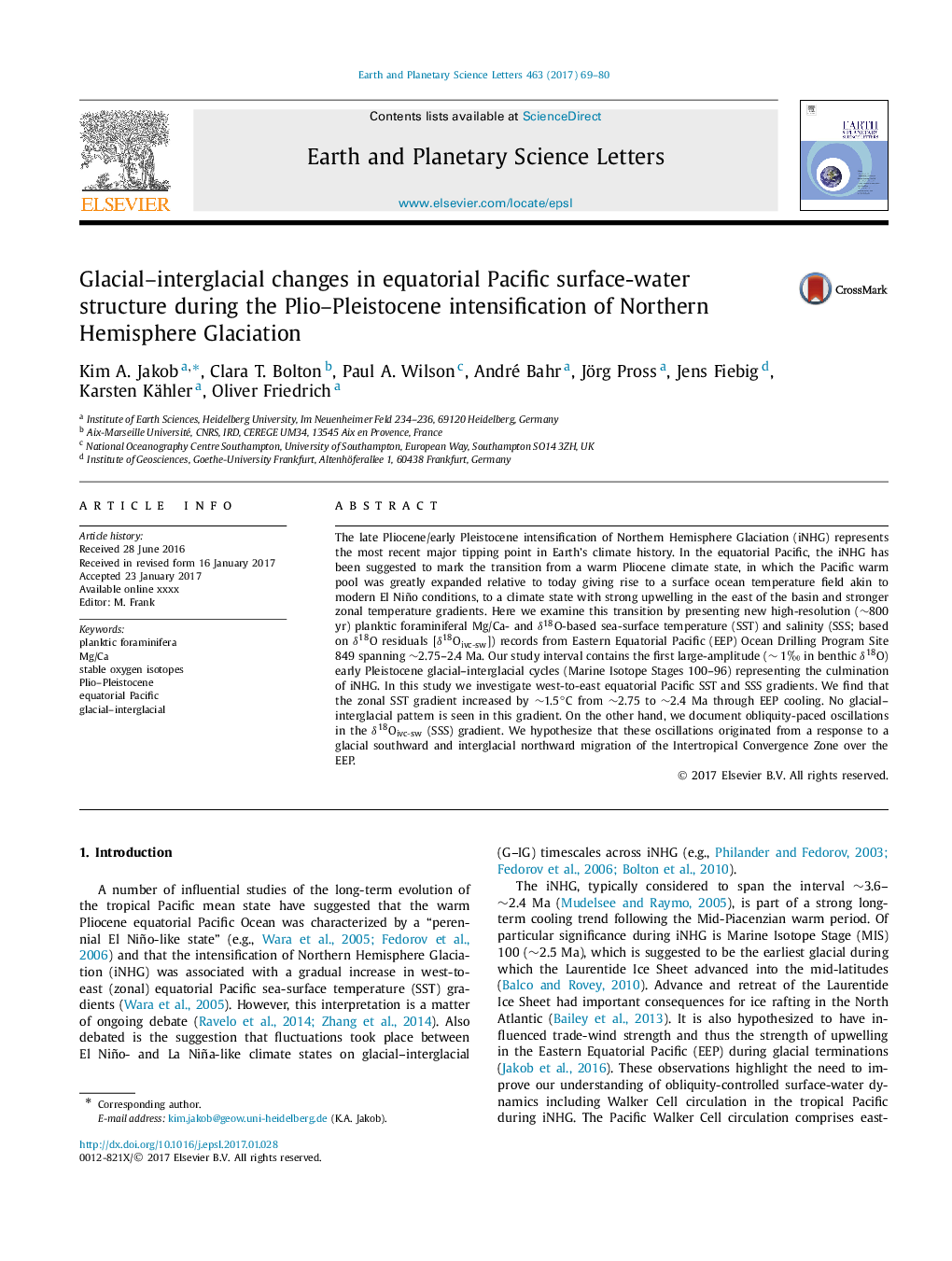| Article ID | Journal | Published Year | Pages | File Type |
|---|---|---|---|---|
| 5780092 | Earth and Planetary Science Letters | 2017 | 12 Pages |
Abstract
The late Pliocene/early Pleistocene intensification of Northern Hemisphere Glaciation (iNHG) represents the most recent major tipping point in Earth's climate history. In the equatorial Pacific, the iNHG has been suggested to mark the transition from a warm Pliocene climate state, in which the Pacific warm pool was greatly expanded relative to today giving rise to a surface ocean temperature field akin to modern El Niño conditions, to a climate state with strong upwelling in the east of the basin and stronger zonal temperature gradients. Here we examine this transition by presenting new high-resolution (â¼800 yr) planktic foraminiferal Mg/Ca- and δ18O-based sea-surface temperature (SST) and salinity (SSS; based on δ18O residuals [δ18Oivc-sw]) records from Eastern Equatorial Pacific (EEP) Ocean Drilling Program Site 849 spanning â¼2.75-2.4 Ma. Our study interval contains the first large-amplitude (â¼1â° in benthic δ18O) early Pleistocene glacial-interglacial cycles (Marine Isotope Stages 100-96) representing the culmination of iNHG. In this study we investigate west-to-east equatorial Pacific SST and SSS gradients. We find that the zonal SST gradient increased by â¼1.5â°C from â¼2.75 to â¼2.4 Ma through EEP cooling. No glacial-interglacial pattern is seen in this gradient. On the other hand, we document obliquity-paced oscillations in the δ18Oivc-sw (SSS) gradient. We hypothesize that these oscillations originated from a response to a glacial southward and interglacial northward migration of the Intertropical Convergence Zone over the EEP.
Keywords
Related Topics
Physical Sciences and Engineering
Earth and Planetary Sciences
Earth and Planetary Sciences (General)
Authors
Kim A. Jakob, Clara T. Bolton, Paul A. Wilson, André Bahr, Jörg Pross, Jens Fiebig, Karsten Kähler, Oliver Friedrich,
